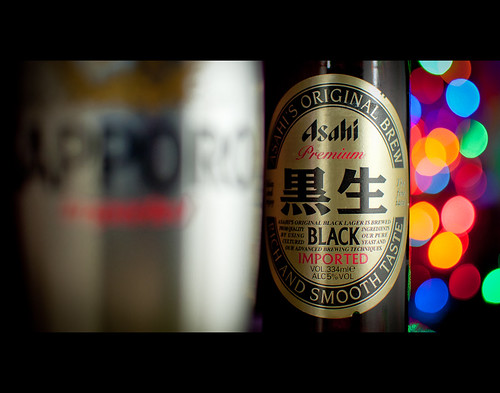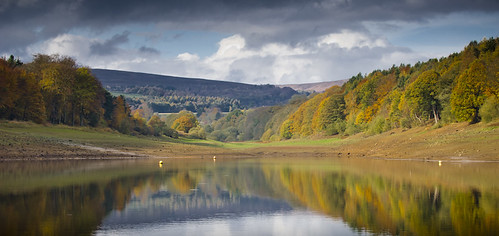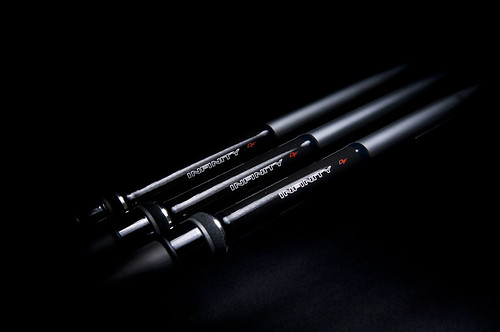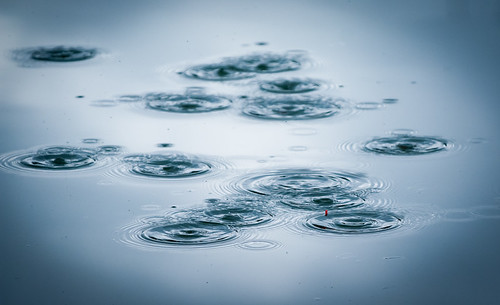So over on my friendly photography forum there has been a new
image-sharing section that is now finding itself home to a lot of more 'out there' photography, including light painting. The majority is not the painting a figure with a sparkler, but that of using light sources of varying sizes and power to create luscious, even lighting over large objects like cars. Two guys (
1,
2) in particular have been showing some awesome work that I'm seriously jealous of.
Anyway, aside from liking what is being done with this technique, it's got me thinking about applying it to the angling products I have to shoot when I'm using the studio back at work. Things like reels, which are generally highly reflective, are a prime candidate so tonight I've had a bit of a play.
But before I talk about that, here are a few examples I've sot over the last few days to get to grips with the technique:
I really like the first shot of my little boy's Wall-e toy, but there are massive flaws; the reflections in the background and the hotspots and unevenness of the light are pretty obvious. But that aside, the light has something akin to a massive softbox with reflectors bouncing light back in. I love it and can see a major application in my work.
The second shot was done taking on advice about making the background 'more black'.
This time I didn't rely on fall-off, instead using some black velvet I found in a cupboard. t's certainly helped kill of any reflections, although a little bit of retouching around the front of the lens was needed, as there was the merest reflection from the light that picked up some texture in the material.
this shot of my trusty 60mm micro-nikkor lens was actually two exposures; the first was the main body of the lens, lit mainly from above to give that overhead softbox feel. The second shot was the light source punched into the front of the lens to pick up the (dented) front ring and the interior detail. It's a marked improvement, although it isn't really fair to compare the cuteness of Wall-e with the Vader-esque blackness of the Nikon lens.
So what light source was I using? With very little to call upon I used my mobile phone (a HTC Desire HD) with a white screenshot and just moved it around in no exact fashion. I have to admit that on both occasions it took a few attempts, but no more than three to get each shot. maybe that's me settling to quickly for what I see, i don't know, but I was happy nonetheless. You just have to keep it moving, not shine it directly at the lens, and try to remember how much coverage you've given to certain areas. rial and error it may be, but I'm sure with time it becomes much more about instinct than anything else.
Which bring me to tonight's effort.
Reels come in all shapes, sizes an colours and they also come in a wide variety of finishes. I love the old Shimano's from the late 1990s, with their matt black finish and subtle graphics, so that was one option. The other reel was again a Shimano (a £250 Technium Mgs)but this time with a bright, pearlescent finish that would kick back plenty of reflections. So, two totally contrasting objects.
I love shooting on black because it gives you a chance to pick out detail and shape that just isn't possible with on-white, high-key photography. Against white, everything can be seen and sometimes objects just look boring. But, and this is a big but, designers love shots on white for easy pathing (cutting out in Photoshop) so I thought it sensible to have a pop to see how it works. maybe shadow could be introduced but how would white background fair? Maybe the light source wasn't going to be able to boss this one....
So, the first two efforts against black:
There's a bit of velvet showing through under the reels where the light has fallen, but it's not obtrusive. I'm actually working on an uncalibrated laptop at the moment (my MBP is in for repair)so it probably looks worse on a calibrated monitor, but what the hell - this is a test and it can have flaws! :)
Anyway, against black they both work well I think. The shiny reel is the pig - it just bounces light all over the place. The image is actually three exposures (a bit of a cheat in some ways) - the front of the spool, the main body, and highlights along the stem. These will be hard but worth it to do in one shot. The black reel though works well. Although to be honest, it probably soaks up too much light so could benefit from a layered approach to pick out detail.
The on-white shots will be even more difficult I believe, but they'll keep for another day....































